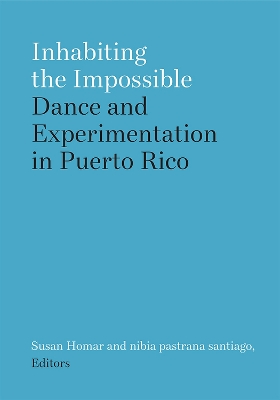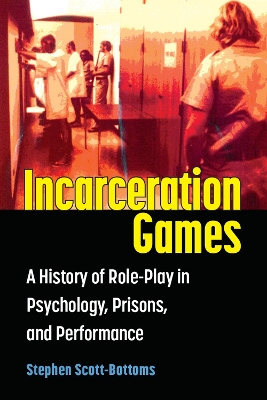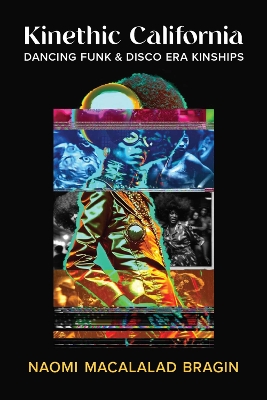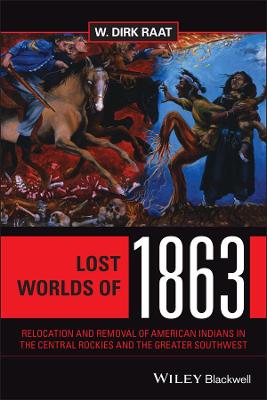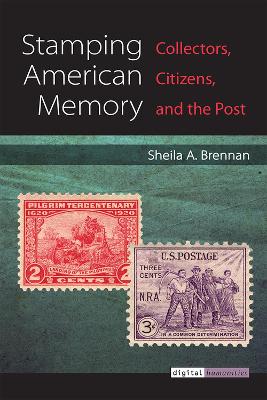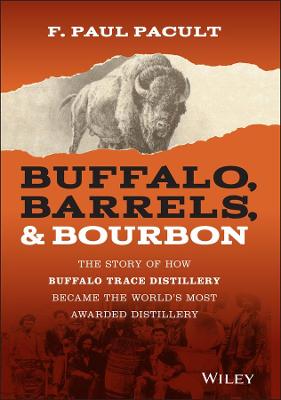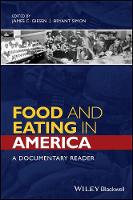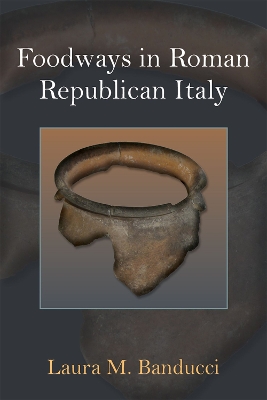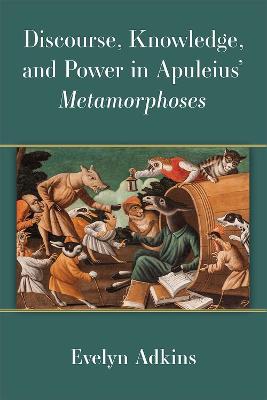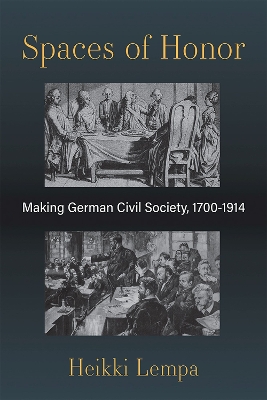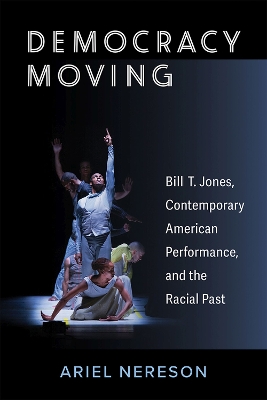Food and Eating in America
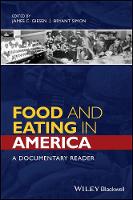 -15%
portes grátis
-15%
portes grátis
Food and Eating in America
A Documentary Reader
Giesen, James C.; Simon, Bryant
John Wiley and Sons Ltd
03/2018
352
Mole
Inglês
9781118936399
15 a 20 dias
506
Series Editors' Preface xii
Part I: An Appetizer: What Food and Eating Tell Us About America 1
Part II: Hunting, Harvesting, Starving, and the Occasional Feast: Food in Early America 9
Chapter 1 Food in the New World: Pre?]Columbian Era through the American Revolution 11
Document 1.1: The Cherokee Creation Story, "How the World Was Made, Wahnenauhi Version" 11
Document 1.2: John Smith's History of the Starving Times at Jamestown Colony (1609) 13
Document 1.3: English Artist John White's drawings of Native Americans fishing, cooking, and preparing corn (1580s) 15
Document 1.4: Edward Winslow on the "First" Thanksgiving, 1621 18
Document 1.5: A Micmac Perspective on Europeans' Way of Life, near Quebec (c. 1677) 21
Document 1.6: John Winthrop, Jr., Report to the Royal Society of London on Indian Corn (1662) 23
Document 1.7: Observations on American Vegetables Versus English Vegetables, from John Josselyn, New?]England's Rarities Discovered (1672), and Francis Higginson, New?]England's Plantation (1630) 25
Document 1.8: A Soldier's Perspective on the Revolutionary War, Selections from the Memoir of Private Joseph Plumb Martin (1777) 27
Document 1.9: A General's Perspective: A Letter from General Horatio Gates to Major General Caswell (August 3, 1780) 30
Document 1.10: Selections from The Autobiography of Benjamin Franklin (1791) on Communal Eating and Vegetarianism 31
Chapter 2 Food, Foodways, and Conflict in the Early Republic 34
Document 2.1: Amelia Simmons, American Cookery (1796), "Preface," and Selected Recipes 34
Document 2.2: The Preface, Introduction, and Assorted Recipes from Mary Randolph, The Virginia House?]Wife (1824) 36
Document 2.3: Unidentified artist, Benjamin Hawkins and the Creek Indians (Painting, c. 1805) 41
Document 2.4: John Lewis Krimmel, The Quilting Frolic (Painting, 1813) 42
Document 2.5: Excerpt from Joseph Doddridge, Notes on the Settlement and Indian Wars of the Western Parts of Pennsylvania and Virginia (1824), Chapter 5, "Beasts and Birds" 44
Document 2.6: Selections from English Phrenologist George Combe, Notes on the United States During a Phrenological Visit in 1838-9-40, vol. II. (1841) 45
Document 2.7: A Variation of the Lyrics of "Home Sweet Home," a Popular Song of the Early Republic (c. 1830) 47
Part III: Fields and Foods in the Nineteenth Century 49
Chapter 3 Slavery and Food in the Old South 51
Document 3.1: Selections from Frederick Douglass, Memoirs on Food and Slavery (1845) 51
Document 3.2: Excerpts from Harriet Jacobs, Incidents in the Life of a Slave Girl (1861) on Slaves' Weekly Rations, Punishments for Slaves' Stealing Food from Master, and Slave Taste Testers for Master 55
Document 3.3: Images of the Antebellum South 56
Document 3.4: Excerpts from Daniel R. A. C. Hundley, Social Relations in Our Southern States (1860) 59
Document 3.5: Selections from Planter James Battle Avirett, The Old Plantation: How We Lived in Great House and Cabin Before the War (1901) 62
Document 3.6: Excerpts from William H. Robinson, From Log Cabin to the Pulpit, or Fifteen Years in Slavery (1913) 65
Document 3.7: Excerpts from Allen Parker, Recollections of Slavery Times (1895) 67
Chapter 4 Agriculture and Food in the Age of Reform 70
Document 4.1: Advice on Farm Management, from The New England Farmer and Horticultural Journal (1828) 70
Document 4.2: Selections from Medicus, The Oracle of Health and Long Life Containing Plain and Practical Instructions for the Preservation of Sound Health...(1837) 72
Document 4.3: Selections from Lydia Maria Child, The American Frugal Housewife (1829) 75
Document 4.4: Excerpts from Sylvester Graham, "A Defence of the Graham System of Living" (1837) 77
Document 4.5: The Mormon "Word of Wisdom" (1833) 82
Document 4.6: Political Cartoon: "A Member of the Temperance Society" (c. 1833) 84
Document 4.7: Family Dietary Advice from William Andrus Alcott, The Young Wife (1837) 85
Chapter 5 Food on the Frontier 88
Document 5.1: Thomas Jefferson's Agrarian Ideal, from Notes on the State of Virginia (1785) 88
Document 5.2: Excerpt from Judge William Cooper, A Guide in the Wilderness (1810) 91
Document 5.3: Food in the West with Lewis and Clark (From their Journals, 1804) 92
Document 5.4: Selections from The Diary of Patrick Breen (1846) 96
Document 5.5: Gold Rush Food: Selections from Lansford W. Hastings, The Emigrants' Guide to Oregon and California (1845) and Elisha Douglas Perkins, Gold Rush Diary (1849) 98
Document 5.6: Advertisement for Cyrus McCormick's Mechanical Reaper (1846) 101
Chapter 6 The Civil War (1861-1865) 103
Document 6.1: Selections from the Diary of Louis Leon (CSA) 103
Document 6.2: The Confederate Right to Impress Food, a selection from "A Bill to Provide Supplies for the Army and to Prescribe the Mode of Making Impressments" (1864) 105
Document 6.3: Photograph of Hardtack 106
Document 6.4: "A Dangerous Novelty in Memphis," cartoon by Frank Bellew, Harper's Weekly (1862) 107
Document 6.5: Photographs of Prisoners Liberated from Confederate Prisons (1865) 109
Chapter 7 Food Reborn: Immigration, Urbanization, and Eating (1857-1905) 111
Document 7.1: Observations of Food and Cooking in Texas: Frederick Law Olmsted, A Journey Through Texas (1857) 111
Document 7.2: Documents on Irish Immigration from Mary Anne Sadlier, Bessy Conway; or, The Irish Girl in America (1885) and John O'Hanlon, The Irish Emigrant's Guide for the United States (1861) 113
Document 7.3: Recipes for "Broth in haste," "Cheap white," and "Tongue, Braised, with Aspic Jelly," from Lafcadio Hearn, Creole Cookbook (1887) 116
Document 7.4: Platform of the Populist Party (1892) 118
Document 7.5: Cooking Utensils for Sale in the 1912 Sears, Roebuck and Co. Catalog 119
Document 7.6: Ernest H. Crosby, Letter to The New York Times on Vegetarianism (1905) 121
Part IV: Feeding a Modern World: Revolutions in Farming, Food, and Famine 125
Chapter 8 The Progressive Era and Food 127
Document 8.1: Samuel Gompers, Meat vs. Rice: American Manhood Against Asiatic Coolieism, Which Shall Survive (1901) 127
Document 8.2: The Pure Food and Drug Act of 1906 (1906) 129
Document 8.3: "Riots in Newark Over Meat Boycott," The New York Times (1910) 132
Document 8.4: "Girls' Canning Clubs" from the Wyoming Farm Bulletin (1914) 135
Document 8.5: Lyrics to the Song, "Hoover's Goin' to Get You!" (1918) 137
Document 8.6: Excerpts from Christine Frederick, "The New Housekeeping," Ladies' Home Journal (1912) 139
Document 8.7: LuAnn Jones, "Work Was My Pleasure: An Oral History of Nellie Stancil Langley" (1991) 146
Document 8.8: "HOT Hamburger: Just Off the Griddle" (1926) 149
Chapter 9 The Great Depression 151
Document 9.1: Oscar Heline, farmer from Iowa, interviewed by Studs Terkel in Hard Times (1970) 151
Document 9.2: John Steinbeck, "The Harvest of Gypsies," San Francisco Chronicle (1936) 155
Document 9.3: Excerpt from Kathy Mays Smith, Gold Medal: CCC Company 1538, A Documentary (2001) 160
Document 9.4: Lynn?]Pgh, Recipe for "Depression Cake" (circa 1935) 162
Document 9.5: President Franklin D. Roosevelt, "Address" (1935) 163
Chapter 10 World War II and the Food and Government Revolution 170
Document 10.1: Office of Price Administration, "How to Use Your War Ration Book" (1943) 170
Document 10.2: Clive McCay, "Eat Well to Work Well: The Lunch Box Should Carry a Hearty Meal," in War Emergency Bulletin No. 38 (1942) 172
Document 10.3: World War II Era Advertisement, "Have a 'Coke' = Good Winds Have Blown You Here" (1943) 175
Document 10.4: "The Official Bracero Agreement," For the Temporary Migration of Mexican Agricultural Workers to the United States (1942) 178
Document 10.5: Excerpt from Jeanne Wakatsuki Houston and James D. Houston, Farewell to Manzanar (1973), 35-38 183
Chapter 11 The Postwar Food Revolution(s) of Suburban America 187
Document 11.1: Photograph of Super Giant Supermarket, Rockville, Maryland (1964) 187
Document 11.2: Excerpt from Emily Post, "Restaurant Etiquette" in Etiquette: The Blue Book of Social Usage (1957) 189
Document 11.3: Excerpt from Rachel Carson, Silent Spring (1962) 196
Document 11.4: Swanson Advertisement, "Everybody Wins" (1963) 201
Document 11.5: Excerpts from Norman Borlaug's lecture "The Green Revolution, Peace, and Humanity," Delivered Upon Receiving the Nobel Peace Prize (1970) 203
Document 11.6: Margaret Visser, "A Meditation on the Microwave," Psychology Today (1989) 212
Chapter 12 Eating Civil Rights 217
Document 12.1: Announcement of New Segregated Restaurant Law, Birmingham Age?]Herald (1914) 217
Document 12.2: Mississippi Freedom Democratic Party, "Food for Fight for Freedom" (1965) 219
Document 12.3: Black Panther Party, "To Feed Our Children," The Black Panther (1969) 224
Document 12.4: Eliseo Medina, "Why A Grape Boycott?" (circa 1969) 226
Document 12.5: Ralph Johnson and Patricia Reed, "What's Wrong with Soul Food," The Black Collegian (1981) 230
Document 12.6: "Marlon Brando, S.F. Cleric Arrested for Fishing Illegally," Seattle Daily Times (1964) 233
Document 12.7: Vietnamese Fishermen's Association, et al., Plaintiffs, v. The Knights of the Ku Klux Klan, et al., Defendants. Civ. A. No. H?]81?]895. United States District Court, S. D. Texas, Houston Division (1981) 236
Document 12.8: Press Release: "T.G.I. Friday's (R) to Bring 'Magic' Brand of Restaurants to Urban Communities" (1998) 245
Chapter 13 The Counterculture and the Lunch Counter 248
Document 13.1: Excerpts from Gordon and Phyllis Grabe, The Hippie Cookbook or Don't Eat Your Food Stamps (1970) 248
Document 13.2: Kit Leder, "Women in the Communes," Women: A Journal of Liberation (1969) 251
Document 13.3: Excerpt from Carol Adams, The Sexual Politics of Meat: A Feminist?]Vegetarian Critical Theory, 20th Anniversary Edition (2010) 255
Document 13.4: Hanna Rosin, "The Evil Empire: The Scoop on Ben & Jerry's Crunchy Capitalism," The New Republic (1995) 257
Document 13.5: Bryant Simon, "Why Starbucks Lost its Mojo," Christian Science Monitor (2005) 262
Chapter 14 Cheap Food, Cheap Calories 266
Document 14.1: Centers for Disease Control Maps of the Obesity Trend in the United States (1985-2010) 266
Document 14.2: Excerpt from Judge Robert Sweet Opinion in Pelman v. McDonald's Corp. (2003) 268
Document 14.3: Michael Pollan, "Down on the Industrial Organic Farm," The New York Times Magazine (2001) 275
Document 14.4: Avi Solomon, "Working Undercover in a Slaughterhouse: An Interview with Timothy Pachirat," Boing, Boing (2008) 281
Document 14.5: Statement of Sarah C. White, Member, United Food and Commercial Workers Local 1529 (1990) 286
Document 14.6: Excerpt from Sarah Wu, also known as "Mrs. Q.," Fed Up with Lunch: How One Anonymous Teacher Revealed the Truth about School Lunches-And How We Can Change Them! (2011) 287
Document 14.7: Excerpt from "Fat Liberation Manifesto" (1973) 293
Chapter 15 Foodies and the Complexities of Consumption 297
Document 15.1: Menu from Spago Restaurant (1987) 297
Document 15.2: Andrew Chan, "'La Grande Bouffe': Cooking Shows as Pornography," Gastronomica (2003) 299
Document 15.3: Rabbi Nahum Ward-Lev and Shelley Mann-Lev, "Keeping Eco?]kosher" (1990) 303
Document 15.4: Mill Creek Farm's Mission Statement and Values (2017) 306
Document 15.5: Excerpt from Gustavo Arellano, Taco USA: How Mexican Food Conquered America (2014) 309
Document 15.6: Rachel Kuo, "The Feminist Guide to Being a Foodie Without Being Culturally Appropriative," from everydayfeminism.com (2015) 312
Document: 15.7: Photograph of People Waiting for Korean Tacos from the Kogi Truck, Torrance, CA (2009) 319
Document 15.8: Greg Wright, "French Fries, Mais Non, Congress Calls em 'Freedom Fries'," USA Today (2003) 320
Document 15.9: Kayleigh Rogers, "When Prison Food is Punishment," from the blog Motherboard (2015) 323
Index 328
Series Editors' Preface xii
Part I: An Appetizer: What Food and Eating Tell Us About America 1
Part II: Hunting, Harvesting, Starving, and the Occasional Feast: Food in Early America 9
Chapter 1 Food in the New World: Pre?]Columbian Era through the American Revolution 11
Document 1.1: The Cherokee Creation Story, "How the World Was Made, Wahnenauhi Version" 11
Document 1.2: John Smith's History of the Starving Times at Jamestown Colony (1609) 13
Document 1.3: English Artist John White's drawings of Native Americans fishing, cooking, and preparing corn (1580s) 15
Document 1.4: Edward Winslow on the "First" Thanksgiving, 1621 18
Document 1.5: A Micmac Perspective on Europeans' Way of Life, near Quebec (c. 1677) 21
Document 1.6: John Winthrop, Jr., Report to the Royal Society of London on Indian Corn (1662) 23
Document 1.7: Observations on American Vegetables Versus English Vegetables, from John Josselyn, New?]England's Rarities Discovered (1672), and Francis Higginson, New?]England's Plantation (1630) 25
Document 1.8: A Soldier's Perspective on the Revolutionary War, Selections from the Memoir of Private Joseph Plumb Martin (1777) 27
Document 1.9: A General's Perspective: A Letter from General Horatio Gates to Major General Caswell (August 3, 1780) 30
Document 1.10: Selections from The Autobiography of Benjamin Franklin (1791) on Communal Eating and Vegetarianism 31
Chapter 2 Food, Foodways, and Conflict in the Early Republic 34
Document 2.1: Amelia Simmons, American Cookery (1796), "Preface," and Selected Recipes 34
Document 2.2: The Preface, Introduction, and Assorted Recipes from Mary Randolph, The Virginia House?]Wife (1824) 36
Document 2.3: Unidentified artist, Benjamin Hawkins and the Creek Indians (Painting, c. 1805) 41
Document 2.4: John Lewis Krimmel, The Quilting Frolic (Painting, 1813) 42
Document 2.5: Excerpt from Joseph Doddridge, Notes on the Settlement and Indian Wars of the Western Parts of Pennsylvania and Virginia (1824), Chapter 5, "Beasts and Birds" 44
Document 2.6: Selections from English Phrenologist George Combe, Notes on the United States During a Phrenological Visit in 1838-9-40, vol. II. (1841) 45
Document 2.7: A Variation of the Lyrics of "Home Sweet Home," a Popular Song of the Early Republic (c. 1830) 47
Part III: Fields and Foods in the Nineteenth Century 49
Chapter 3 Slavery and Food in the Old South 51
Document 3.1: Selections from Frederick Douglass, Memoirs on Food and Slavery (1845) 51
Document 3.2: Excerpts from Harriet Jacobs, Incidents in the Life of a Slave Girl (1861) on Slaves' Weekly Rations, Punishments for Slaves' Stealing Food from Master, and Slave Taste Testers for Master 55
Document 3.3: Images of the Antebellum South 56
Document 3.4: Excerpts from Daniel R. A. C. Hundley, Social Relations in Our Southern States (1860) 59
Document 3.5: Selections from Planter James Battle Avirett, The Old Plantation: How We Lived in Great House and Cabin Before the War (1901) 62
Document 3.6: Excerpts from William H. Robinson, From Log Cabin to the Pulpit, or Fifteen Years in Slavery (1913) 65
Document 3.7: Excerpts from Allen Parker, Recollections of Slavery Times (1895) 67
Chapter 4 Agriculture and Food in the Age of Reform 70
Document 4.1: Advice on Farm Management, from The New England Farmer and Horticultural Journal (1828) 70
Document 4.2: Selections from Medicus, The Oracle of Health and Long Life Containing Plain and Practical Instructions for the Preservation of Sound Health...(1837) 72
Document 4.3: Selections from Lydia Maria Child, The American Frugal Housewife (1829) 75
Document 4.4: Excerpts from Sylvester Graham, "A Defence of the Graham System of Living" (1837) 77
Document 4.5: The Mormon "Word of Wisdom" (1833) 82
Document 4.6: Political Cartoon: "A Member of the Temperance Society" (c. 1833) 84
Document 4.7: Family Dietary Advice from William Andrus Alcott, The Young Wife (1837) 85
Chapter 5 Food on the Frontier 88
Document 5.1: Thomas Jefferson's Agrarian Ideal, from Notes on the State of Virginia (1785) 88
Document 5.2: Excerpt from Judge William Cooper, A Guide in the Wilderness (1810) 91
Document 5.3: Food in the West with Lewis and Clark (From their Journals, 1804) 92
Document 5.4: Selections from The Diary of Patrick Breen (1846) 96
Document 5.5: Gold Rush Food: Selections from Lansford W. Hastings, The Emigrants' Guide to Oregon and California (1845) and Elisha Douglas Perkins, Gold Rush Diary (1849) 98
Document 5.6: Advertisement for Cyrus McCormick's Mechanical Reaper (1846) 101
Chapter 6 The Civil War (1861-1865) 103
Document 6.1: Selections from the Diary of Louis Leon (CSA) 103
Document 6.2: The Confederate Right to Impress Food, a selection from "A Bill to Provide Supplies for the Army and to Prescribe the Mode of Making Impressments" (1864) 105
Document 6.3: Photograph of Hardtack 106
Document 6.4: "A Dangerous Novelty in Memphis," cartoon by Frank Bellew, Harper's Weekly (1862) 107
Document 6.5: Photographs of Prisoners Liberated from Confederate Prisons (1865) 109
Chapter 7 Food Reborn: Immigration, Urbanization, and Eating (1857-1905) 111
Document 7.1: Observations of Food and Cooking in Texas: Frederick Law Olmsted, A Journey Through Texas (1857) 111
Document 7.2: Documents on Irish Immigration from Mary Anne Sadlier, Bessy Conway; or, The Irish Girl in America (1885) and John O'Hanlon, The Irish Emigrant's Guide for the United States (1861) 113
Document 7.3: Recipes for "Broth in haste," "Cheap white," and "Tongue, Braised, with Aspic Jelly," from Lafcadio Hearn, Creole Cookbook (1887) 116
Document 7.4: Platform of the Populist Party (1892) 118
Document 7.5: Cooking Utensils for Sale in the 1912 Sears, Roebuck and Co. Catalog 119
Document 7.6: Ernest H. Crosby, Letter to The New York Times on Vegetarianism (1905) 121
Part IV: Feeding a Modern World: Revolutions in Farming, Food, and Famine 125
Chapter 8 The Progressive Era and Food 127
Document 8.1: Samuel Gompers, Meat vs. Rice: American Manhood Against Asiatic Coolieism, Which Shall Survive (1901) 127
Document 8.2: The Pure Food and Drug Act of 1906 (1906) 129
Document 8.3: "Riots in Newark Over Meat Boycott," The New York Times (1910) 132
Document 8.4: "Girls' Canning Clubs" from the Wyoming Farm Bulletin (1914) 135
Document 8.5: Lyrics to the Song, "Hoover's Goin' to Get You!" (1918) 137
Document 8.6: Excerpts from Christine Frederick, "The New Housekeeping," Ladies' Home Journal (1912) 139
Document 8.7: LuAnn Jones, "Work Was My Pleasure: An Oral History of Nellie Stancil Langley" (1991) 146
Document 8.8: "HOT Hamburger: Just Off the Griddle" (1926) 149
Chapter 9 The Great Depression 151
Document 9.1: Oscar Heline, farmer from Iowa, interviewed by Studs Terkel in Hard Times (1970) 151
Document 9.2: John Steinbeck, "The Harvest of Gypsies," San Francisco Chronicle (1936) 155
Document 9.3: Excerpt from Kathy Mays Smith, Gold Medal: CCC Company 1538, A Documentary (2001) 160
Document 9.4: Lynn?]Pgh, Recipe for "Depression Cake" (circa 1935) 162
Document 9.5: President Franklin D. Roosevelt, "Address" (1935) 163
Chapter 10 World War II and the Food and Government Revolution 170
Document 10.1: Office of Price Administration, "How to Use Your War Ration Book" (1943) 170
Document 10.2: Clive McCay, "Eat Well to Work Well: The Lunch Box Should Carry a Hearty Meal," in War Emergency Bulletin No. 38 (1942) 172
Document 10.3: World War II Era Advertisement, "Have a 'Coke' = Good Winds Have Blown You Here" (1943) 175
Document 10.4: "The Official Bracero Agreement," For the Temporary Migration of Mexican Agricultural Workers to the United States (1942) 178
Document 10.5: Excerpt from Jeanne Wakatsuki Houston and James D. Houston, Farewell to Manzanar (1973), 35-38 183
Chapter 11 The Postwar Food Revolution(s) of Suburban America 187
Document 11.1: Photograph of Super Giant Supermarket, Rockville, Maryland (1964) 187
Document 11.2: Excerpt from Emily Post, "Restaurant Etiquette" in Etiquette: The Blue Book of Social Usage (1957) 189
Document 11.3: Excerpt from Rachel Carson, Silent Spring (1962) 196
Document 11.4: Swanson Advertisement, "Everybody Wins" (1963) 201
Document 11.5: Excerpts from Norman Borlaug's lecture "The Green Revolution, Peace, and Humanity," Delivered Upon Receiving the Nobel Peace Prize (1970) 203
Document 11.6: Margaret Visser, "A Meditation on the Microwave," Psychology Today (1989) 212
Chapter 12 Eating Civil Rights 217
Document 12.1: Announcement of New Segregated Restaurant Law, Birmingham Age?]Herald (1914) 217
Document 12.2: Mississippi Freedom Democratic Party, "Food for Fight for Freedom" (1965) 219
Document 12.3: Black Panther Party, "To Feed Our Children," The Black Panther (1969) 224
Document 12.4: Eliseo Medina, "Why A Grape Boycott?" (circa 1969) 226
Document 12.5: Ralph Johnson and Patricia Reed, "What's Wrong with Soul Food," The Black Collegian (1981) 230
Document 12.6: "Marlon Brando, S.F. Cleric Arrested for Fishing Illegally," Seattle Daily Times (1964) 233
Document 12.7: Vietnamese Fishermen's Association, et al., Plaintiffs, v. The Knights of the Ku Klux Klan, et al., Defendants. Civ. A. No. H?]81?]895. United States District Court, S. D. Texas, Houston Division (1981) 236
Document 12.8: Press Release: "T.G.I. Friday's (R) to Bring 'Magic' Brand of Restaurants to Urban Communities" (1998) 245
Chapter 13 The Counterculture and the Lunch Counter 248
Document 13.1: Excerpts from Gordon and Phyllis Grabe, The Hippie Cookbook or Don't Eat Your Food Stamps (1970) 248
Document 13.2: Kit Leder, "Women in the Communes," Women: A Journal of Liberation (1969) 251
Document 13.3: Excerpt from Carol Adams, The Sexual Politics of Meat: A Feminist?]Vegetarian Critical Theory, 20th Anniversary Edition (2010) 255
Document 13.4: Hanna Rosin, "The Evil Empire: The Scoop on Ben & Jerry's Crunchy Capitalism," The New Republic (1995) 257
Document 13.5: Bryant Simon, "Why Starbucks Lost its Mojo," Christian Science Monitor (2005) 262
Chapter 14 Cheap Food, Cheap Calories 266
Document 14.1: Centers for Disease Control Maps of the Obesity Trend in the United States (1985-2010) 266
Document 14.2: Excerpt from Judge Robert Sweet Opinion in Pelman v. McDonald's Corp. (2003) 268
Document 14.3: Michael Pollan, "Down on the Industrial Organic Farm," The New York Times Magazine (2001) 275
Document 14.4: Avi Solomon, "Working Undercover in a Slaughterhouse: An Interview with Timothy Pachirat," Boing, Boing (2008) 281
Document 14.5: Statement of Sarah C. White, Member, United Food and Commercial Workers Local 1529 (1990) 286
Document 14.6: Excerpt from Sarah Wu, also known as "Mrs. Q.," Fed Up with Lunch: How One Anonymous Teacher Revealed the Truth about School Lunches-And How We Can Change Them! (2011) 287
Document 14.7: Excerpt from "Fat Liberation Manifesto" (1973) 293
Chapter 15 Foodies and the Complexities of Consumption 297
Document 15.1: Menu from Spago Restaurant (1987) 297
Document 15.2: Andrew Chan, "'La Grande Bouffe': Cooking Shows as Pornography," Gastronomica (2003) 299
Document 15.3: Rabbi Nahum Ward-Lev and Shelley Mann-Lev, "Keeping Eco?]kosher" (1990) 303
Document 15.4: Mill Creek Farm's Mission Statement and Values (2017) 306
Document 15.5: Excerpt from Gustavo Arellano, Taco USA: How Mexican Food Conquered America (2014) 309
Document 15.6: Rachel Kuo, "The Feminist Guide to Being a Foodie Without Being Culturally Appropriative," from everydayfeminism.com (2015) 312
Document: 15.7: Photograph of People Waiting for Korean Tacos from the Kogi Truck, Torrance, CA (2009) 319
Document 15.8: Greg Wright, "French Fries, Mais Non, Congress Calls em 'Freedom Fries'," USA Today (2003) 320
Document 15.9: Kayleigh Rogers, "When Prison Food is Punishment," from the blog Motherboard (2015) 323
Index 328

